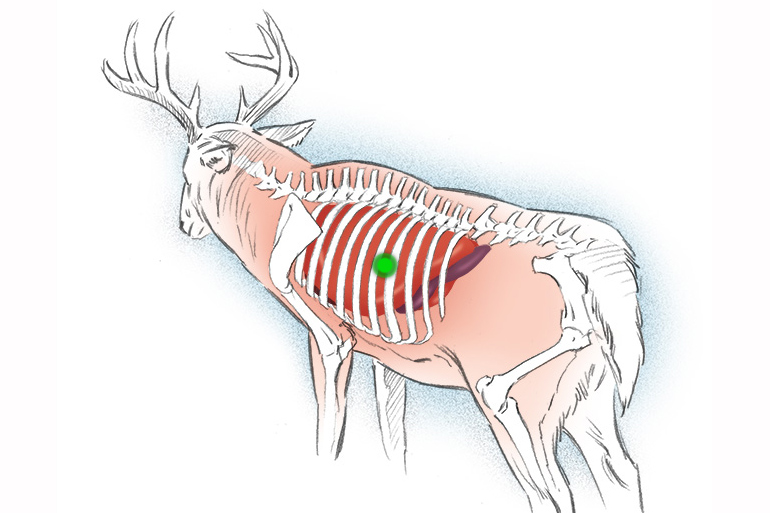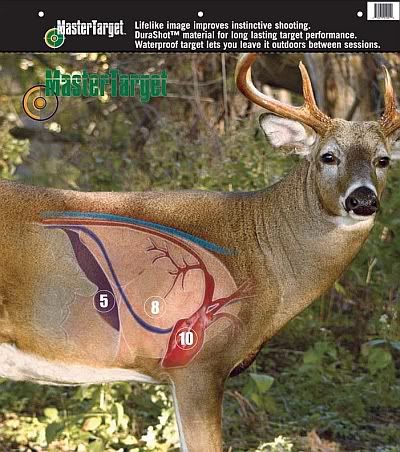
Master Shot Placement on Western Big Game
Many hunters believe that western big game animals are bigger, stronger, and tougher than their eastern counterparts. They also think that shot placement is more challenging due to differences in anatomy. However, these ideas are actually myths.
While some western animals like Alaska moose and brown bears can be large, a fully mature Ohio whitetail buck can hold its own against the biggest Colorado mule deer. Additionally, the anatomical structure of western game animals is no different from that of eastern game. The heart, lungs, liver, and spine are in the same positions. Size and anatomy are not significant factors.
So why are western animals known for their durability and the belief that they are difficult to kill with well-placed shots?
The truth is, they aren’t. The misconception arises from poor shooting. Hunters who make marginal hits tend to attribute the animal’s ability to absorb bullets and run off to its toughness, when in reality, it’s their own inadequate shot placement.
On the other hand, experienced western hunters who have used rifles like .30-30s, .243 Winchesters, and even .22-250s understand the importance of accurate shots through the heart and lungs. They aim low and tight behind the shoulder for the heart and slightly higher for the lungs.
Let’s Get Real About Shot Placement
Some hunters may boast about neck or brain shots, but these are not advisable. The head and neck of an animal can move suddenly and quickly, making it difficult to hit accurately. Aiming for these areas can result in non-fatal hits or broken jaw shots.
Based on years of experience and countless successful hunts, my advice for shot placement is simple: aim for the front half and center of the animal. Imagine a box formed by drawing an imaginary line from the back edge of the animal’s front leg vertically through its torso, and another line from where the brisket begins turning up to where the backline starts transitioning into the neck. The center of this box is where you should aim, slightly below the top of the heart.
This method may seem simplistic, but it is effective. By aiming for this boxed area, you are targeting the heart, aorta, lungs, spine, shoulder, and leg bones. Hitting any of these vital organs will result in a quick kill. Even if you miss and break the shoulder or leg bones, the animal will likely be slowed down enough for a follow-up shot. Ideally, the bullet should transition from breaking the shoulder to puncturing the lungs and heart, ensuring a fatal shot. However, it’s important to note that not every shot can instantly incapacitate the animal, and tracking and blood trailing may be necessary.

While there are no guarantees in hunting, centuries of chest shots with various projectiles have shown that aiming for the chest is the safest bet for a clean kill.
Understand Shot Angle
The position of the animal in relation to the line of your bullet’s trajectory is crucial for shot placement.
A classic shot is the “tight behind the shoulder” on a broadside animal, where the bullet passes through or over the heart and into the lungs. If the shot is slightly high, it will hit the lungs or spine. If it’s slightly forward, it will hit the shoulder/leg bones and more lungs. If it’s both forward and higher (the high shoulder shot), it will hit the lungs and spine.
However, if the deer is angled away from you, aiming tight behind the shoulder can result in the bullet being deflected between the shoulder and ribs. If the angle is steep enough, the ribs can redirect the bullet, causing a non-fatal hit.
If the animal is quartering towards you, a shot behind the shoulder will hit the paunch. The angle at which the animal is quartering determines how much the bullet misses the vital organs. This is why it’s essential to visualize the vital chest cavity as if you had x-ray vision and understand the positions of the heart, lungs, and shoulders.
For quartering shots on big game, using a quality bullet is important. Premium bullets and larger calibers can punch through muscle, paunch, or bone to reach and destroy vital organs, even when the shot angle is less than perfect.
By familiarizing yourself with the anatomy of big game animals and understanding your bullet’s performance, you’ll be better prepared to take accurate shots from different angles. However, it’s crucial to know when to pass on a shot if the conditions are not favorable.
More Stories In This Series
- Choosing the Best Western Big-Game Cartridge
- Choosing a Western Big-Game Rifle
- Choosing a Riflescope for a Western Big-Game Rifle
- How to Set Up Your Western Big-Game Rifle
- Aiming Systems for Your Western Rifle Rig

A skilled hunter, dedicated conservationist, and advocate for ethical practices. Respected in the hunting community, he balances human activity with environmental preservation.
